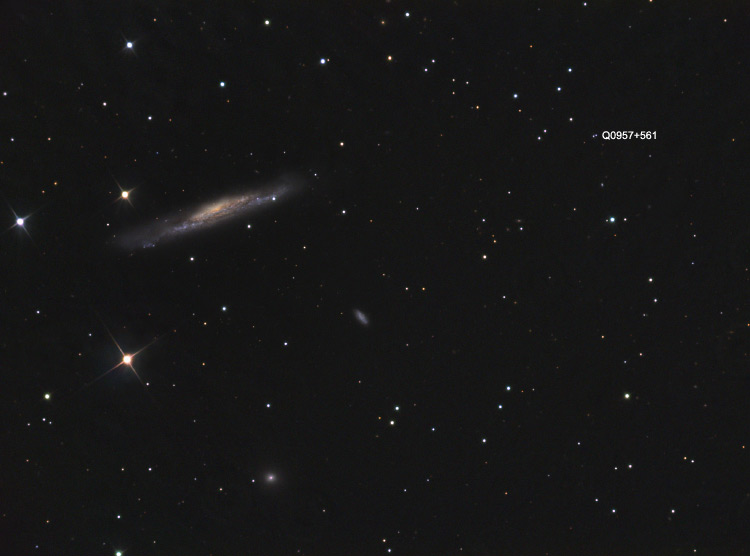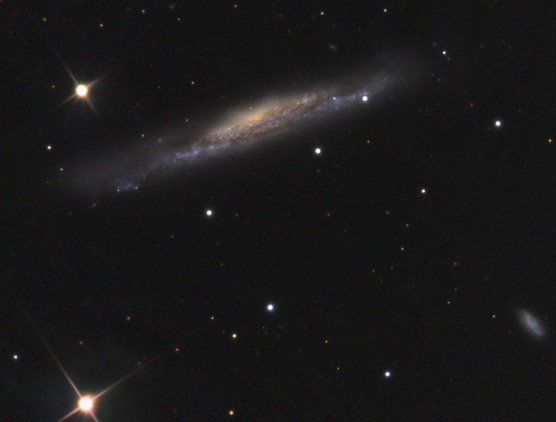
About this Image |
|
|
The active galaxy NGC 3079 in UMA in approx. 50 million light years distance has got special attention due to its huge bubble of gas that bursts off the galactic plane,
checkout the HST report: here.
|


0,36
|
|
| Optics |
16" cassegrain in secondary focus at f/10 |
| Mount | MK-100 GEM |
| Camera | SBIG STL-11000M at -25C, internal filter wheel |
| Filters | Astronomik LRGB |
| Date | Apr 14, 2005. |
| Location | Wildon/Austria |
| Sky Conditions | mag 5 sky, raw FWHM 2.5" half Moon high up, temperature 8 C |
| Exposure | L:R:G:B = 60:30:30:30 minutes (15-minute sub-exposures for RGB, 10 min subs for L), |
| Processing | Image aquisition in Maxim, image calibration, aligning, DDP in ImagesPlus; color balance, curves, unsharp mask in Photoshop; Noise reduction by Neatimage; |